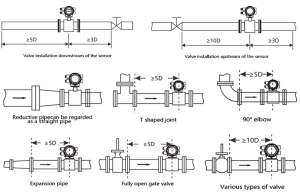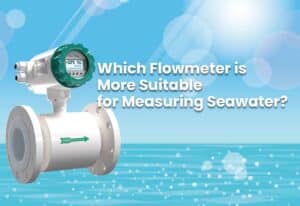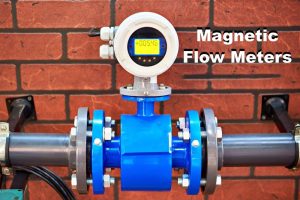In the world of fluid measurement, insertion electromagnetic flow meters have become increasingly popular for their affordability, ease of installation, and ability to deliver accurate data. But before you hit “Buy Now”, you must be sure that the meter you’re choosing will meet your operational, environmental, and technical requirements. This detailed guide covers everything you need to know before purchasing an insertion electromagnetic flow meter today.
1. What Is an Insertion Electromagnetic Flow Meter?
Before diving into buying considerations, it’s essential to understand what an insertion electromagnetic flow meter is. Unlike full-bore meters that cover the entire pipe cross-section, insertion-type meters are installed by inserting a sensor probe into the pipe. These meters measure the flow velocity of conductive fluids using Faraday’s law of electromagnetic induction.
They are often favored in large pipe applications due to their lower installation cost, less downtime, and retrofit flexibility.
2. Why Choose Insertion Over Full-Bore Flow Meters?
When comparing insertion vs full-bore electromagnetic flow meters, several practical and financial benefits stand out:
-
Lower installation and maintenance costs
-
Easier retrofit into existing pipelines
-
Quick replacement without cutting large pipe sections
-
Great for large-diameter pipelines where full-bore options are costly
However, they may be less accurate in low flow or non-ideal profiles, so it’s crucial to assess your system’s needs.
3. Check for Fluid Compatibility
Not all fluids are compatible with electromagnetic technology. Ensure the fluid:
-
Has a minimum conductivity, typically >5 μS/cm
-
Is non-oily and free of large non-conductive solids
-
Is chemically compatible with the sensor’s electrode and lining materials
For corrosive or abrasive fluids, check for electrode materials like tantalum, platinum, or Hastelloy.
4. Confirm Pipe Size and Installation Location
Before purchasing, verify the pipe diameter where the flow meter will be inserted. Installation errors are a leading cause of poor performance.
You must also assess:
-
Straight pipe run before and after the sensor (typically 10D upstream and 5D downstream)
-
Flow profile – Is it laminar, turbulent, or distorted by elbows, valves, etc.?
-
Access space for installation and maintenance
5. Evaluate the Expected Flow Range
Insertion magnetic flow meters typically perform best within a specific velocity range, often between 0.3 m/s and 10 m/s.
To avoid poor readings, check that your system’s minimum and maximum flow rates fall within the meter’s optimal range. Oversizing or undersizing the meter can lead to inaccuracies and wasted investment.
6. Power Supply Options and Output Signals
Ensure your system can support the meter’s power requirements—AC, DC, or battery-powered.
Also, match the output signals to your monitoring or control system:
-
4–20 mA current loop
-
Pulse output
-
Modbus, HART, or RS485 communication protocols
This guarantees seamless integration with SCADA systems, PLCs, or remote telemetry units.
7. Check for Built-in Display and Configuration Flexibility
Many insertion magnetic flow meters come with local LCD displays showing real-time flow data, diagnostics, and alerts.
Look for models that offer:
-
User-friendly menus
-
Password protection
-
Multiple language support
-
Field-configurable outputs
A readable display and intuitive interface save time during commissioning and maintenance.
8. Look Into Accuracy and Repeatability
Accuracy is always a top concern. For insertion meters, typical accuracy ranges are around ±1.5% of reading. However, repeatability—how consistent the reading is under similar conditions—is equally important.
Make sure to review:
-
Calibration certificates
-
Accuracy curves at different flow rates
-
Independent third-party test results, if available
9. Review Ingress Protection (IP) and Environmental Ratings
Will the meter be installed indoors, outdoors, or in harsh environments?
Check the IP rating—IP65, IP67, or even IP68—for water and dust protection. Also, confirm the meter is resistant to temperature extremes, UV, vibration, and chemical exposure if necessary.
This prevents premature failure and ensures long-term reliability.
10. Examine Certification and Compliance Standards
A flow meter must comply with industry regulations and standards, especially for municipal, food & beverage, or chemical industries.
Look for certifications such as:
-
ISO 9001
-
CE
-
RoHS
-
ATEX / IECEx (for hazardous areas)
-
NSF (for drinking water)
Also, verify that factory calibration was performed with traceability.
11. Understand Maintenance and Cleaning Requirements
Ease of maintenance is key. Many insertion meters allow for hot-tap installation, meaning you don’t need to shut down your system for maintenance.
Ask:
-
Can the probe be removed and cleaned easily?
-
Are there self-diagnostic features?
-
Are spare parts readily available?
Some manufacturers offer built-in cleaning mechanisms or anti-fouling coatings for applications prone to buildup.
12. Don’t Forget Total Cost of Ownership (TCO)
The initial cost is only part of the equation. A meter that costs $800 upfront but needs frequent calibration or spare parts could end up being more expensive than a $950 unit with lower maintenance needs.
Ask yourself:
-
How often will it need recalibration?
-
Are service contracts available?
-
What’s the average product lifespan?
Lower TCO = higher long-term value.
13. Read Reviews and Compare Reputable Brands
Never skip this step. Browse industry forums, supplier reviews, and case studies to see how specific models perform in real-world applications.
Top brands often include:
-
Siemens
-
Yokogawa
-
KROHNE
-
McCrometer
-
ALIA
Don’t just rely on specs—learn from other buyers’ experience.
14. Ask These Questions Before Finalizing Your Purchase
Here’s a quick checklist of powerful questions to ask suppliers:
-
Is installation support available?
-
What is the warranty period?
-
How quickly can replacement parts be shipped?
-
Are there OEM or third-party repair services?
-
What kind of after-sales support is offered?
Asking the right questions now prevents regrets later.
15. Where to Buy: Trusted Online & Local Sources
Consider buying from:
-
Authorized distributor websites
-
Industrial equipment suppliers
-
Local flow meter specialists
Check for:
-
Return policies
-
Installation services
-
Technical support hotline
Avoid vague e-commerce listings with limited documentation.
Conclusion: Don’t Buy Blind — Buy Smart
Buying an insertion electromagnetic flow meter is a technical decision that impacts system performance, maintenance, and cost-efficiency. By checking compatibility, installation conditions, certifications, and support services beforehand, you’ll make a purchase that delivers value for years to come.
Do your homework, ask the right questions, and only buy from trusted sources.
You’ll thank yourself later—and so will your bottom line.
We are a manufacturer of automatic flow meters with many years of experience in the industry. We have strong independent research and development capabilities and are a leader in the flow meter industry. Our main products include electromagnetic flow meters, vortex flow meters, turbine flow meters, ultrasonic flow meters, Coriolis flow meters, various solenoid valves, level meters, control units and valves, etc. Welcome to purchase –Best Instrument





